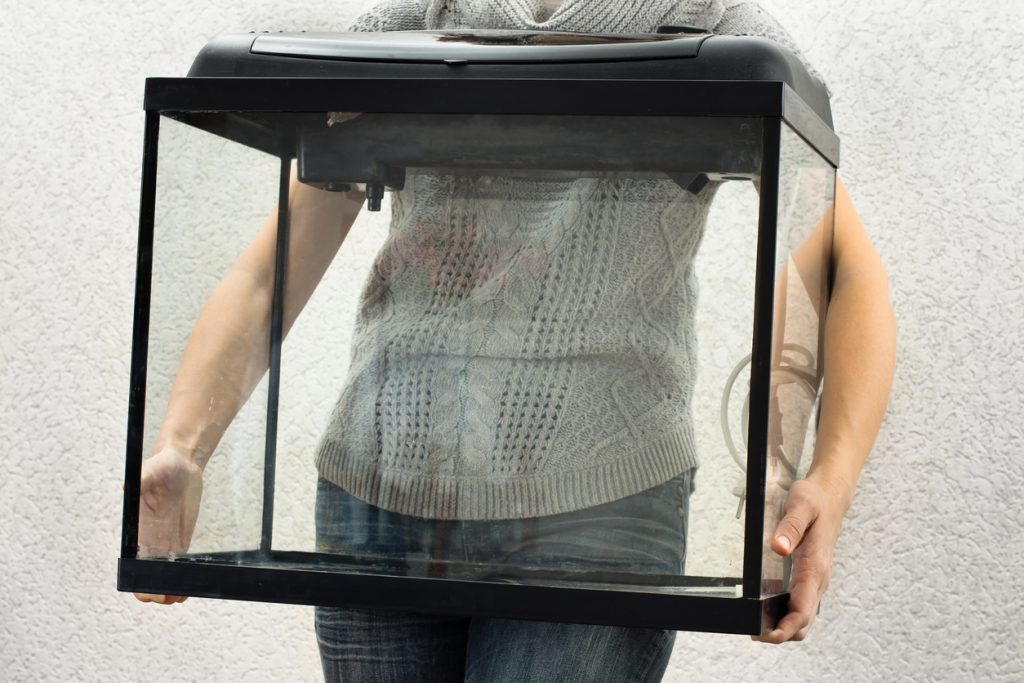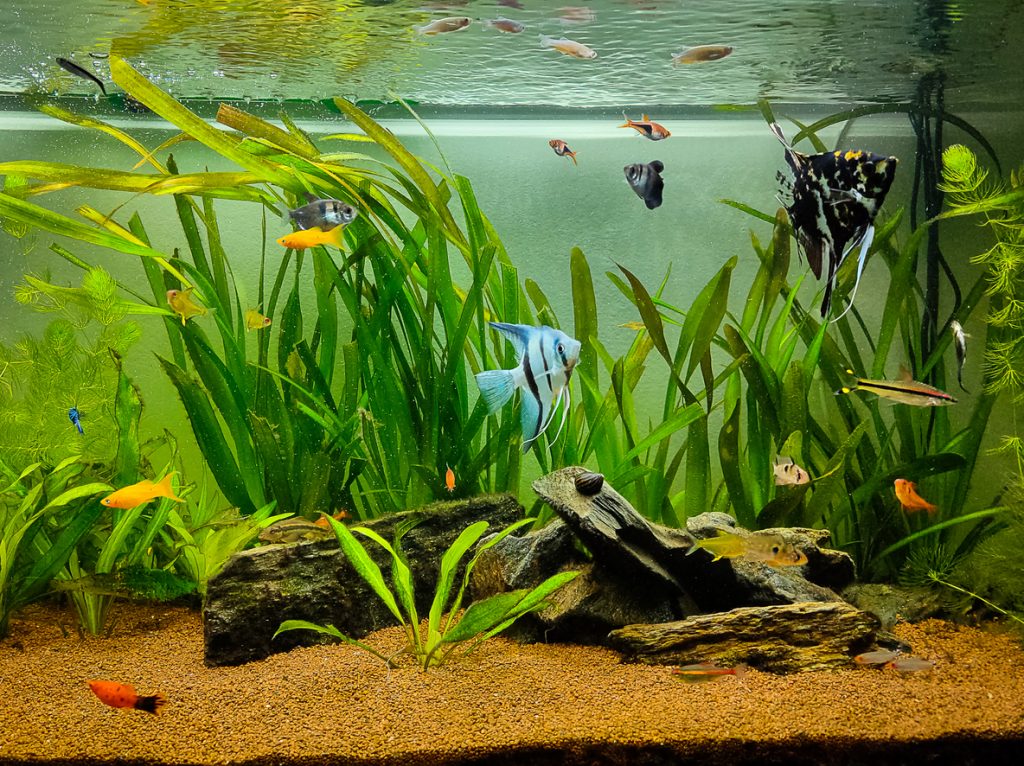A fish tank can be a great addition to your home – fish are fascinating little characters and looking after them can be fun and rewarding. There’s a lot to think about when you’re setting up a new fish tank though, from filters and lighting to plants and decorations. It’s important to make sure you’ve got everything you need to keep your fish happy and healthy, so we’ve put together this guide to help you out.
Choosing new fish
Your new fish will actually be the last thing you buy, because before you bring your new friends home you’ll need to get the tank set up and ready for them. However, it’s important to choose which kind of fish you’re going to keep from the start, because this determines how big a tank you need, what equipment you should get, which plants to add and what water conditions to aim for. Saltwater and freshwater fish have very different requirements and so this is a big decision to make first off, but within these two categories, individual types of fish can also have different needs.
When you’re planning which fish to get, it’s useful to think about your budget and how much space you have to fit the tank in your home. If you only have room for a little tank, think about small fish or shrimps. A bigger tank can accommodate fish of a larger size. Bear in mind that if you’re intending to add new friends to your tank in the fullness of time, you’ll need the tank to be big enough for everyone from the start! If you are going to keep several fish together, it’s important to choose them carefully so they get on well with each other.
What fish go well together in a tank?
With so many different fish to choose from, how can you make sure they get on? First, research the types of fish you’re interested in and look up how sociable they are. The retailer who stocks your fish will be able to advise you, and fish compatibility charts can also help you select your new friends.
As a general rule, Guppies, Tetras, Mollies, Danios and Swordtails are amongst the more friendly fish out there and these can get along with a range of other species. Goldfish, on the other hand, generally prefer to share space with their own kind. Cichlids are even less sociable, as they’re territorial characters who often don’t even get on with each other. Male cichlids in particular tend to be aggressive to other males.
Bear in mind that while some fish will swim all over the tank, others tend to keep to a particular level. These fish can be classed as top, middle or bottom-dwelling. This is an important thing to think about when you’re deciding which fish to keep together, as the fish that live at different levels won’t tend to compete so much for space.

Choosing your tank and equipment
Once you’ve thought about the type of fish you’re planning to keep, you can choose a tank of the appropriate size and the equipment to go with it. It’s always best to check the requirements of your particular species, but here’s a general checklist of the equipment you’ll want to think about:
- Aquarium/Tank: It’s important to make sure your tank is big enough for all the fish you’re going to keep. Bigger fish like Oscars will need more space than little fish such as Guppies, but generally fish will be happier if they have more space! If space is restricted too much, your pets may become stressed and aggressive and may not grow properly. If you’re keeping fish for the first time, it’s worth bearing in mind that smaller tanks can actually be more challenging to maintain, as the water conditions can change quicker.
- Stand: Aquariums weigh a lot when they’re full and you may find your furniture is not strong enough to take it! It’s also important that tanks are kept exactly level to make sure the weight is distributed evenly. An aquarium stand can be a safer option.
- Filter: A filter is essential to clean the water of excess food, fish waste and other debris. Without filtration, the water would become stagnant and make the fish ill. There are different types of filters and the right choice depends on your setup. Power filters are easy to maintain and are a popular choice for small tanks, while canister filters are great for large aquariums.
- Lighting: As well as making your aquarium look good, lighting is important for your fish as a constant light/dark routine helps them regulate their sleeping and eating patterns. Aquariums often come with a light in the lid, but it’s also possible to buy bulbs separately. You can even get creative and combine lighting with air circulation with an LED air curtain
- Air pump: These are very useful in some tanks to maintain a healthy oxygen concentration in the water, and are required for certain types of filters.
- Heater and thermometer: If you’re keeping tropical fish, it’s important to make sure the temperature is high enough for them and stays constant throughout the day. If you’ve got a large tank, it may work better to have a small heater either side to make sure the heat distribution is even. You’ll also need a thermometer to check the temperature is correct and it’s best to position this away from the heater. Some heaters are sold with thermometers, but otherwise you can buy a thermometer separately .
- Substrate: This is the material to put on the bottom of the aquarium. The substrate is great for making your tank look aesthetic, it’s also needed for plants to root in and it makes a home for beneficial bacteria that help clean the water. The two main options are sand or gravel.
- Plants/decoration: Decorative tank ornaments such as bridges can add a bit of interest. Many fish like to have a hiding place, so incorporating caves or having ornaments they can swim in and out of can keep them happy. Plants are also great addition – these can be either live or plastic. Live plants can provide food for herbivorous fish and they also help to keep the water in good condition by removing toxins like ammonia and nitrite.

Those are the main items to consider, but you’ll also need some other bits and bobs for maintenance including cleaning supplies, water conditioner and fish nets, as well as water test kits to make sure the water chemistry is healthy for your fish.
Also, if you’re thinking of setting up a saltwater rather than freshwater aquarium, you will need to think about some extra items. These include salt, ‘live rock’ (chunks of rock that harbour beneficial bacteria), a protein skimmer (a device that removes dissolved organic material to minimise the stress on the filter) and a powerhead (or water pump).
Once you’ve got all you need, it’s time to set up home for your new friends. Check out our article on how to set up a new fish tank for a step-by-step guide on how to do this.
Found these tips helpful? Join Vital Pet Club’s e-news below to be the first to hear about exclusive pet freebies and pet care tips!


